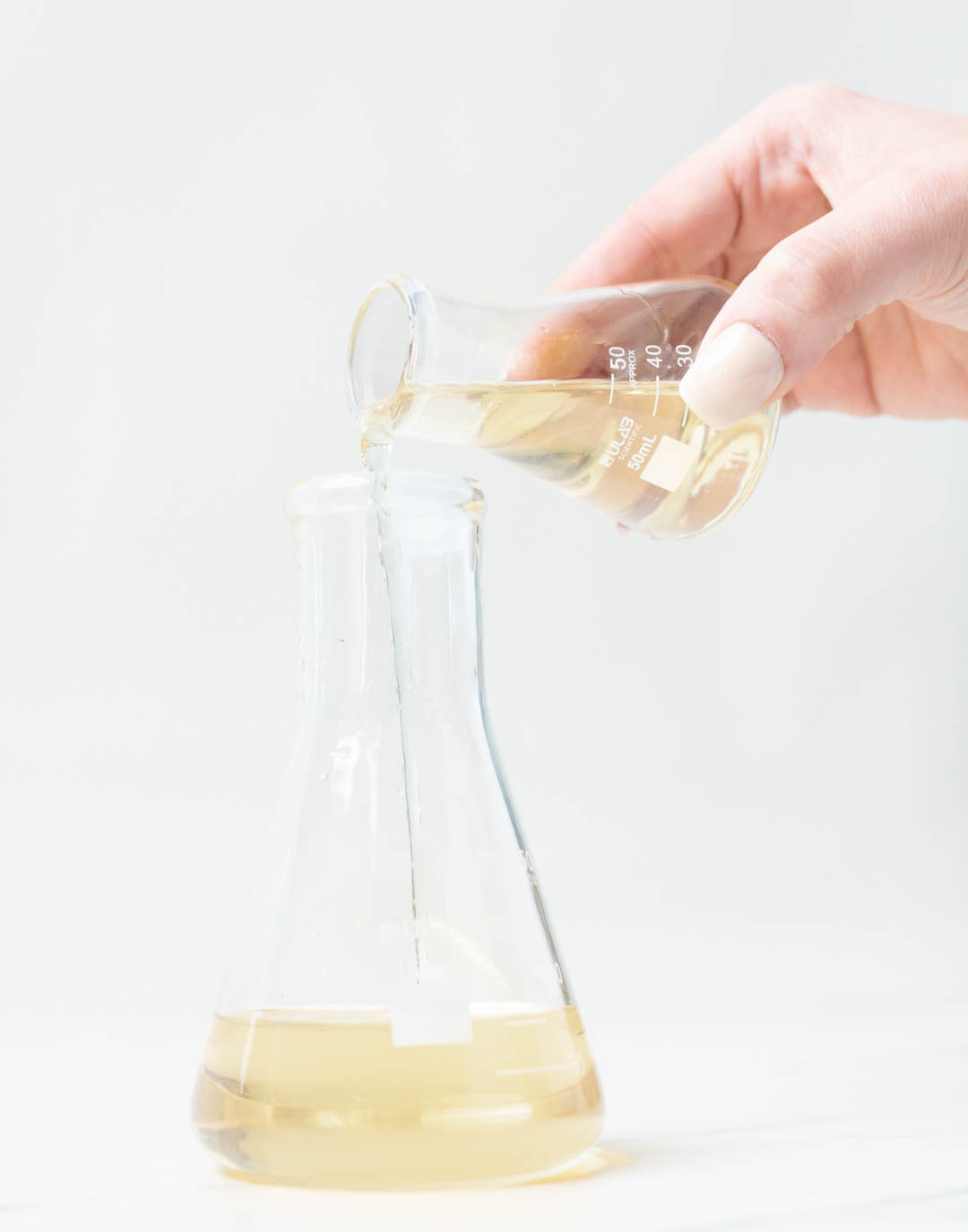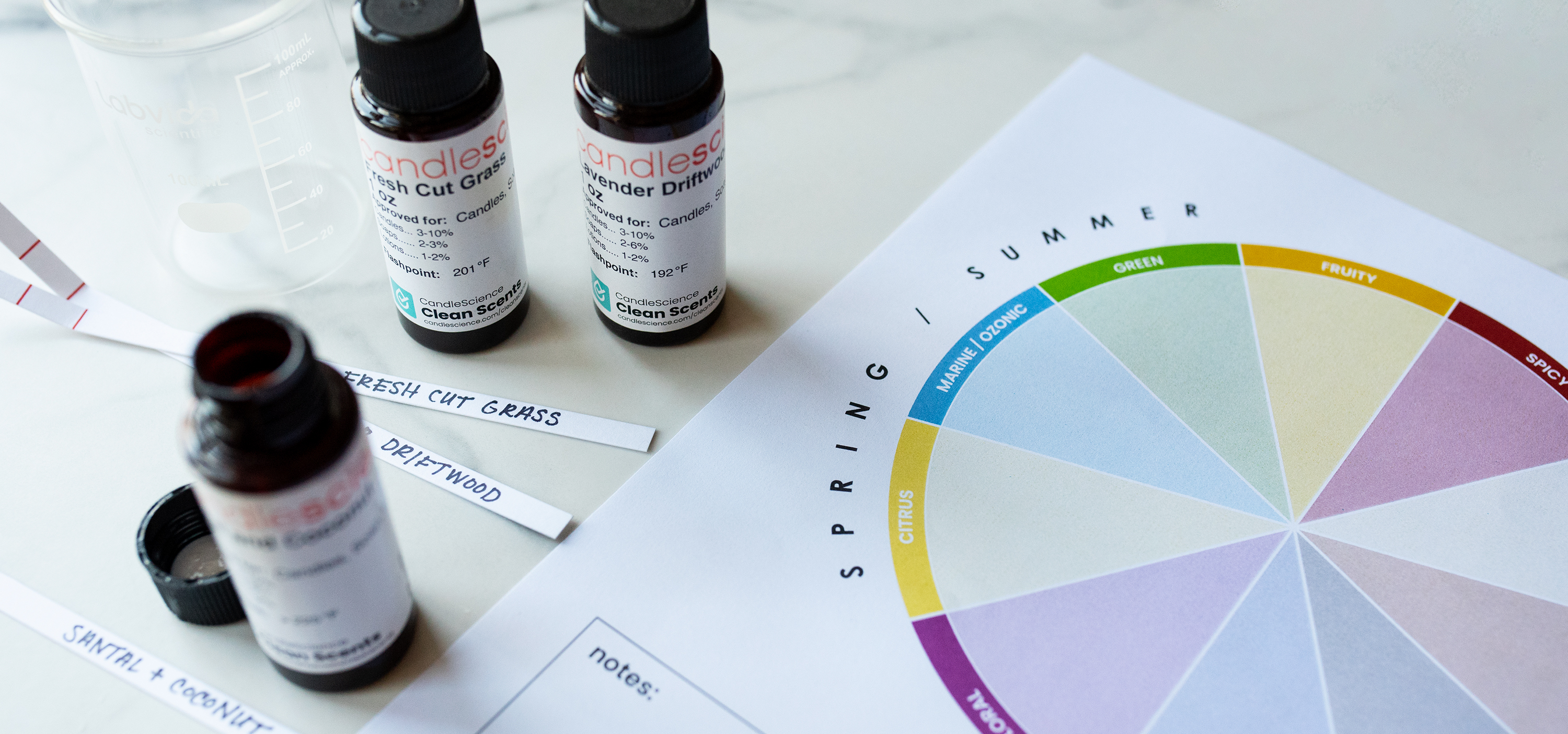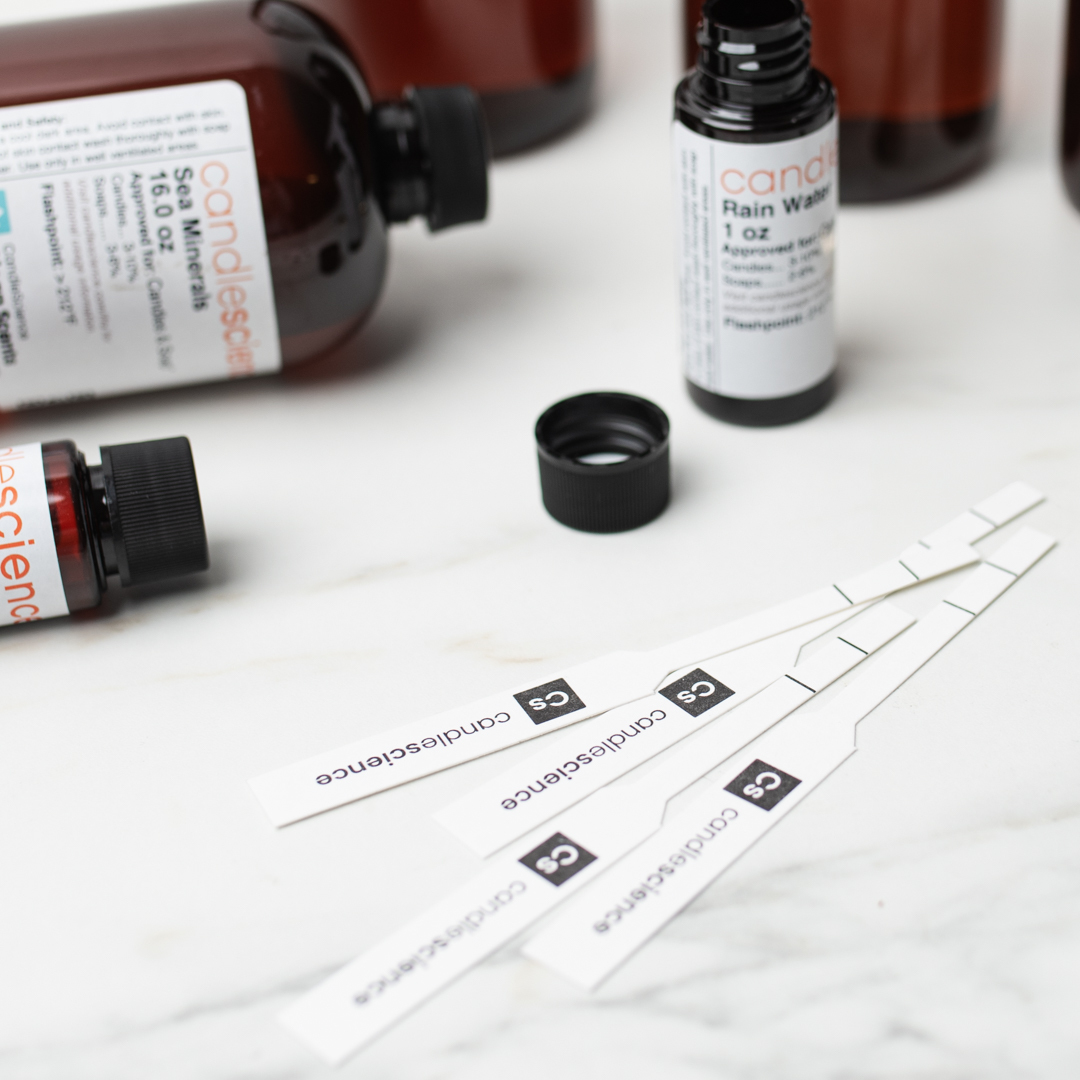Fragrance Oil Blending With BlendingElements

Our newest fragrance oil line puts you in the perfumer’s seat with carefully crafted, true-to-life, single-note scents.
In this article, you’ll learn all about BlendingElements. Discover the multitude of ways you can use these single-note scents; from expanding your product line to deepening your fragrance blending practice to celebrating your favorite notes on their own.


About CandleScience BlendingElements
We’ve received many requests for single-note scents over the years, and for good reason! Single-note fragrance oils give makers more flexibility. With single-note scents, you can create your own unique scent blends, amplify your favorite notes in complex fragrance oils, or showcase the beauty of a scent’s simplicity.
While each BlendingElements fragrance oil can be used on its own, we specifically developed these fragrances for you to blend with other oils to create more complex blends. BlendingElements are suitable for a variety of applications and are made with the same rigorous standards you expect from CandleScience.
We developed the BlendingElements line by partnering with some of the world's most prestigious fragrance houses. Using the latest advancements in fragrance formulation and extraction, many of our BlendingElements are inspired by cutting-edge technologies from dsm-firmenich. These state-of-the-art innovations help us deliver unique, true-to-life sensory experiences that we are thrilled to share with our customers.



Composing original fragrances with BlendingElements
With BlendingElements line of fragrance oils, you’re the perfumer. Each BlendingElements fragrance oil represents a single note, allowing you to create your own signature scent by blending as many or as few as you want.
Working with all single-note fragrance oils can yield surprising results. The way you imagine two, or more, notes smelling together can sometimes be very different than how they smell when testing on blotter strips!
When composing a fragrance with BlendingElements, start by smelling each note individually on blotter strips. Blotter strips allow you to easily evaluate scents and try different fragrance combinations.
Then, start testing your blend ideas! Add one note at a time and record how each note impacts the overall fragrance you’re creating. Once you’re happy with the notes you’ve put together, you can also try playing with different ratios to fine-tune your creation even more.
Enhancing multi-note fragrance oils with BlendingElements
Another way to use BlendingElements is by blending them with multi-note fragrances to amplify particular notes. Let’s use Passionfruit Pineapple and Coconut Element fragrance oils as an example.
Passionfruit Pineapple has a coconut middle note that’s fairly subtle compared with this scent’s bright fruity notes. If you wanted to enhance the coconut aspect of this scent, you could try making your own blend of Coconut Element and Passionfruit Pineapple.
Ready to give this a try? Start with your current favorite fragrance oil. Is there an element you want to add more of? Do you think it could benefit from a hint of citrus, or perhaps something woody?
BlendingElements are an amazing tool for customizing multi-note fragrance oils or making them feel more aligned with your brand.
Creating your own single-note products with BlendingElements
With the abundance of perfumer-developed, multi-note fragrance oils on the market, single-note candles or soaps are a refreshing concept.
Highlight the beauty of fragrance minimalism by showcasing popular, or your favorite, notes on their own. Single-note products can help differentiate your brand because they can be difficult to find on store shelves. Many customers enjoy multi-note fragrances, but there’s still a large market for those who appreciate the simplicity of just one note.
IFRA Usage Rates and BlendingElements
IFRA, or the International Fragrance Association, promotes the safe use and enjoyment of fragrances. The IFRA Standards are a set of rules and regulations for the use of fragrance materials, and a baseline for the industry.
Each and every fragrance has its own certificate confirming compliance with IFRA’s standards. Because the composition of every fragrance is different, every fragrance has different usage levels for different applications. IFRA usage rates tell users the most fragrance they can use in an application and remain safe. However, that doesn’t necessarily tell you, the maker, how much to use in each base.
We’ve created a quick reference guide to make your blending experience as simple as possible. It lists the most common applications that our customers use—candles, bar soaps, liquid soaps, lotions, room sprays, perfumes, and diffuser bases. Check out the guide to see our usage rate recommendations for each BlendingElements fragrance oil in an easy-to-read chart. Or, learn more about how to use an IFRA certificate on our site.

How to describe your original fragrances
After you’ve perfected your signature blends, it’s time to describe them. With traditional multi-note fragrance oils, the supplier’s description is typically a good starting point. But when composing a fragrance from individual notes, you’ll need to draw inspiration from elsewhere.
Fragrance descriptions range from literal to interpretive, and there’s no right or wrong way here. You can list each individual note you used or keep the descriptions broader by using note categories; citrus instead of lemon, for example.
Some fragrance descriptions employ atmospheric language—words like breezy, cozy, or aquatic—to set the tone of the experience the end-user is meant to have. Other fragrance descriptions tell a personal story that goes along with scent the maker created.
The best part of writing fragrance descriptions is having complete creative control. You’re expressing your creative vision, and there’s no wrong way to do that!
Want to include top, middle, and base notes with your fragrance descriptions but aren’t sure which is which? Test the product you made with your unique blend and pay attention to the notes you smell. The ones that fade first are top notes. Middle notes are the most prominent notes that shine through after the top notes fade, while base notes linger in a room after time has passed.
Final Notes on BlendingElements
Our best fragrance oils are inspired by our customers, and the BlendingElements line is no different. These fragrance oils celebrate the unique perspective and talent of makers. By offering oils with single fragrance notes, we turn the creative decisions over to you.
We’re constantly impressed by what makers create using our supplies. With even more ownership over the blending process, we can’t wait to see what you’ll create.
Whether you already know which notes you’re going to pair, are excited to personalize your favorite multi-note fragrance oil, or can’t wait to offer single-note home fragrance products, we hope this line inspires your creativity and empowers you to create ultra-unique fragrances of your own.
Blending Resources for Makers
Want to learn more about blending and working with fragrance oils? Bookmark these resources to expand your fragrance blending know-how.

Fragrance Oil Blending 101
With a bit of know-how and a little creativity, anyone can become a fragrance mixologist!

The fragrance wheel: Notes, families, and how to use it
Understand the relationship between different olfactory categories.

Fragrance and Blending Calculator
Get precise fragrance calculations for any project!

How to use blotter strips
Discover why blotter strips are a necessary tool for makers who craft with scent, and how to use them.

How to evaluate fragrance oils
Learn all the ways to evaluate fragrance oils so that you can get the most out of each and every one.

Fragrance Note Glossary
Discover the origins, nuances, and profiles of the notes that describe fragrances.
Do you have any questions about fragrance oil blending? Have you discovered any interesting blends using single-note scents? Let us know in the comments below!